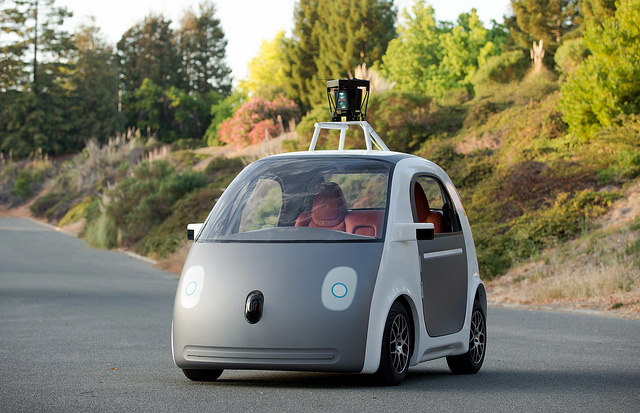Humans are dreadful drivers. We kill each other with motorized vehicles at an alarming rate — 1.2 million men, women and children a year, worldwide. We drive drunk. We drive too fast. We drive with cellphones in our hands. In some ways, it’s not our fault. We have limited, narrow vision, slow reaction times and make poor, emotional choices. Our knowledge of traffic extends only as far as our sense. Honestly, we stink behind the wheel.
That’s why companies like Google, Ford and Uber want cars to drive themselves. They’ve already proven that self-driving cars are far safer than ones with people behind the wheel. To a lot of drivers, especially those who don’t know much about current technology, that seems to make no sense. How could a car anticipate a kid running into traffic or handle black ice? Turns out, really, really well.
Most self-driving cars use a scanning technology called LIDAR (light radar) that can map the 3D space around a moving car precisely. That data is combined with front-facing radar, proximity sensors, video feeds from multiple car-mounted cameras, vehicle metrics and knowledge of street maps and traffic conditions. All that 360-view data is processed and acted on far faster than humans can think. That kid dashing into traffic? A self-driving car can sense the motion and hit the brake before the child has even entered a human’s peripheral vision.
But how, ego-bruised drivers might ask, can a self-driving car deal with traffic? Turns out, that’s the wrong question. The more interesting question is: “What would traffic look like if all cars were self-driving?” The answer is: like a flock of birds, a school of fish or an exercise in fluid dynamics.
Birds and fish fly and swim in formation using very simple rules that each knows and respects. Likewise, fluids flow in predictable ways, especially when you consider fluids as streams of small particles — you know, the way rush hour looks from a traffic helicopter.
So, a flock of self-driving cars can not only communicate to maintain safe distances but can also act as an intelligent swarm or stream to decrease traffic jams, eliminate human-created rubbernecking and reduce “road memory” — the phenomenon of traffic slowing long after an accident has cleared — to zero.
Best of all, a swarm of self-driving vehicles can share their knowledge of the road and hazards with other cars, creating a safety mesh that extends far beyond the boundaries of a single vehicle.
And, of course, self-driving cars would mean fewer cars on the road. Why? To answer that question, ask another one. Why has Uber, the taxi-crushing disruptive innovation, grabbed 50 researchers from the Carnegie Mellon’s National Robotics Engineering Center? The first reason is, of course, that drivers are Uber’s biggest expense. So, if Uber can run its service with self-driving cars, that expense vapourizes. The second reason is that Uber imagines a world where autonomous autos can pick up more than one client at a time or ferry a businesswoman to work, return to her home autonomously and then drive her daughter to school, returning in the afternoon for the trip back. It would turn cars into not objects to own, but services to book.
For anyone concerned about fossil fuel depletion, atmospheric pollution and, well, saving lives, self-driving cars are a boon. But, those same folks might also be concerned about something going wrong. The reality is, of course, something goes fatally wrong on our highways 1.2 million times a year now. So, the biggest barrier to autonomous autos isn’t technical, it’s emotional. But it’s also — and I think for the better — inevitable.
Listen to an audio version of this column, read by the author, here.
Wayne MacPhail has been a print and online journalist for 25 years, and is a long-time writer for rabble.ca on technology and the Internet.
Photo: smoothgroover22/flickr




